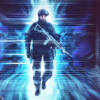
Self Defense Training Course
Preventive. Disuasive. Liable.
Based on your needs, expertise, expectations and goals.
Self Defense Training Course.
Course Overview: This course aims to equip participants with the practical skills, mindset, and confidence needed to handle potential threats and protect themselves and those around them in a variety of situations. Through hands-on learning and scenario-based training, participants will develop the ability to respond effectively to real-world challenges while leading their normal lives.
Course Structure:
1- Introduction to Self-Defense:
- Empowering participants to handle potential threats while leading a normal life.
- Discuss the importance of situational awareness, mindset, and preparedness.
2- Situational Assessment and Threat Recognition:
- Understand the concept of the “Self Defense mindset."
- Learn to analyze environments for potential threats using the OODA loop, (Observe, Orient, Decide, Act)
- Identify behavioral cues that might indicate a threat.
3- Quick and Effective Strikes:
- Master basic striking techniques: palm strikes, knee strikes, elbow strikes.
- Practice proper body mechanics for maximum impact and minimal risk.
- Focus on target areas and angles of attack for different situations.
4- Escapes from Holds and Grabs:
- Learn practical techniques to break free from various holds and grabs.
- Emphasize using leverage and sudden movements to escape.
- Practice under pressure to simulate real-world scenarios.
5- Weapon Awareness and Defense:
- Recognize common weapons and their potential dangers.
- Explore strategies for disarming attackers wielding weapons.
- Develop reflexes for responding to weapon threats effectively.
6- Close-Quarters Combat Techniques:
- Understand the principles of close-quarters combat.
- Practice controlling opponents, gaining dominant positions, and staying safe in confined spaces.
- Learn to adapt techniques for different environments.
7- Teamwork and Communication in Self-Defense:
- Explore the dynamics of working in a team during self-defense situations.
- Practice verbal communication and non-verbal cues for effective coordination.
- Develop strategies to support and protect others in your group.
8- Low-Light and Unfavorable Conditions:
- Learn techniques for navigating and defending in low-light environments.
- Understand the use of flashlights and improvised tools for self-defense.
- Practice maintaining awareness and control in challenging conditions.
9- Dealing with Multiple Attackers:
- Develop tactics for managing threats from multiple attackers.
- Learn strategies to control the engagement and create opportunities to escape.
- Understand how to prioritize targets and maintain situational awareness.
10- Scenario-Based Training:
- Apply learned skills in realistic scenarios.
- Engage in simulations that challenge decision-making and adaptability.
- Receive constructive feedback to refine techniques and responses.
Conclusion:
- The course will consist of interactive lectures, practical demonstrations, hands-on exercises, and scenario-based simulations.
- Participants will have the opportunity to practice techniques in a controlled and supportive environment.
- Safety and responsible use of skills will be emphasized throughout the training.
- The importance of continuous practice and further learning is the main key for improvement.
Certification: Upon successful completion of the Self-Defense Training Course, participants will be awarded a Self-Defense Certificate. This certification is a testament to the participant's dedication, skill acquisition, and commitment to personal safety. The certificate signifies that the recipient has undergone comprehensive training in tactical self-defense techniques and is equipped to handle potential threats while maintaining a normal lifestyle..


OUR TRAINING COURSES







